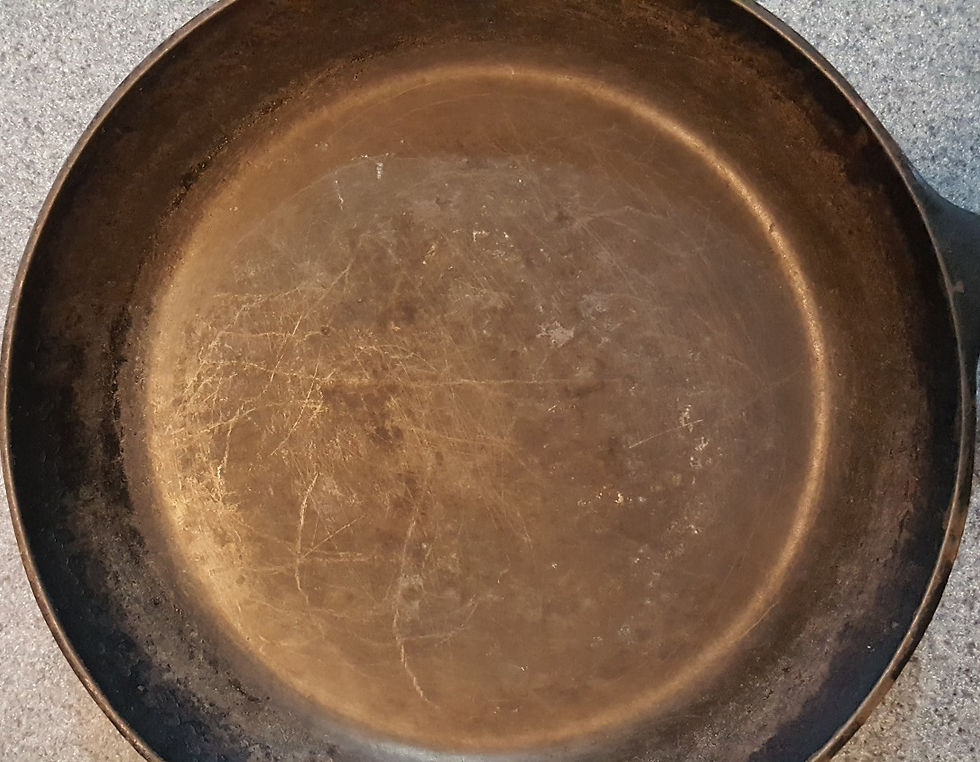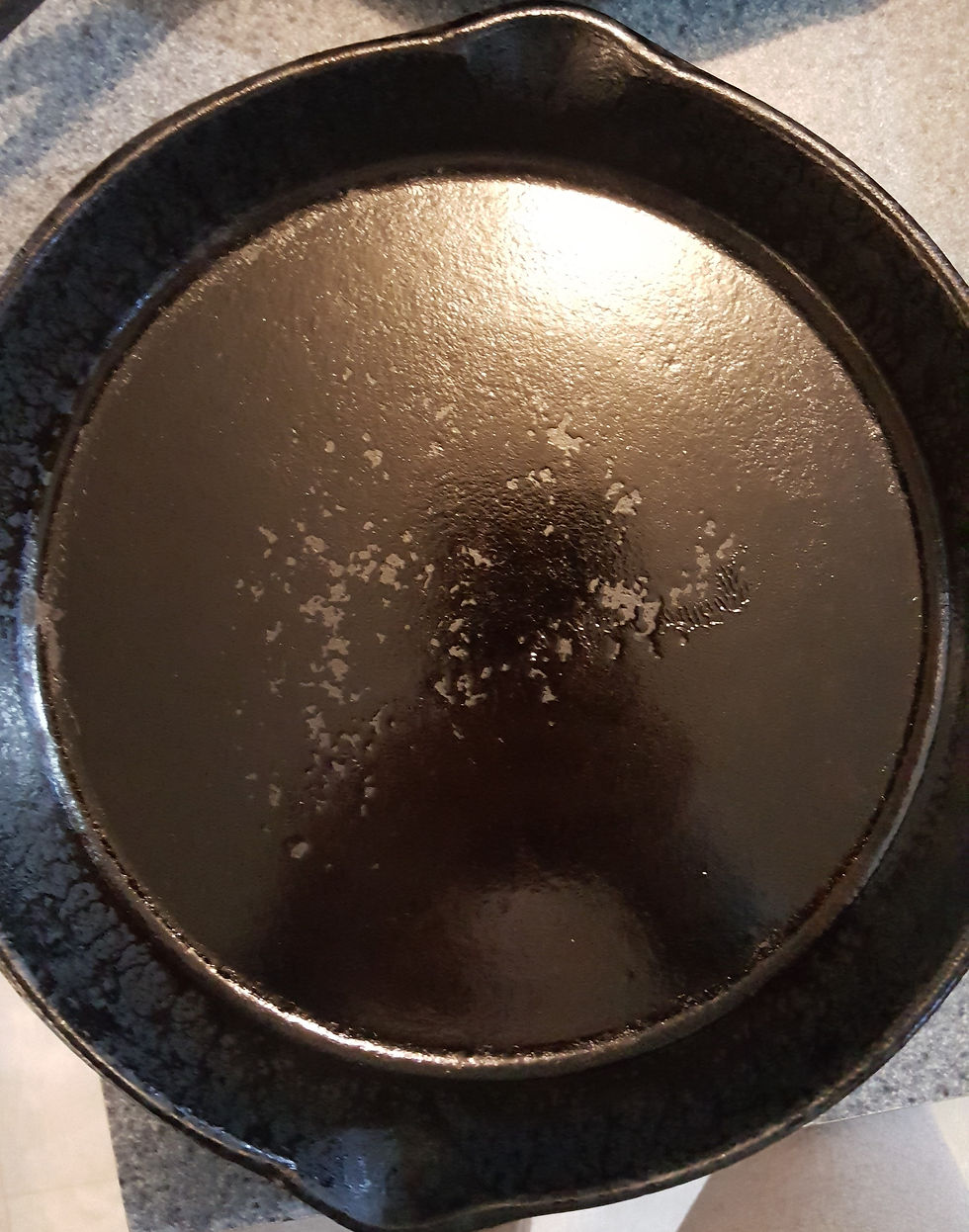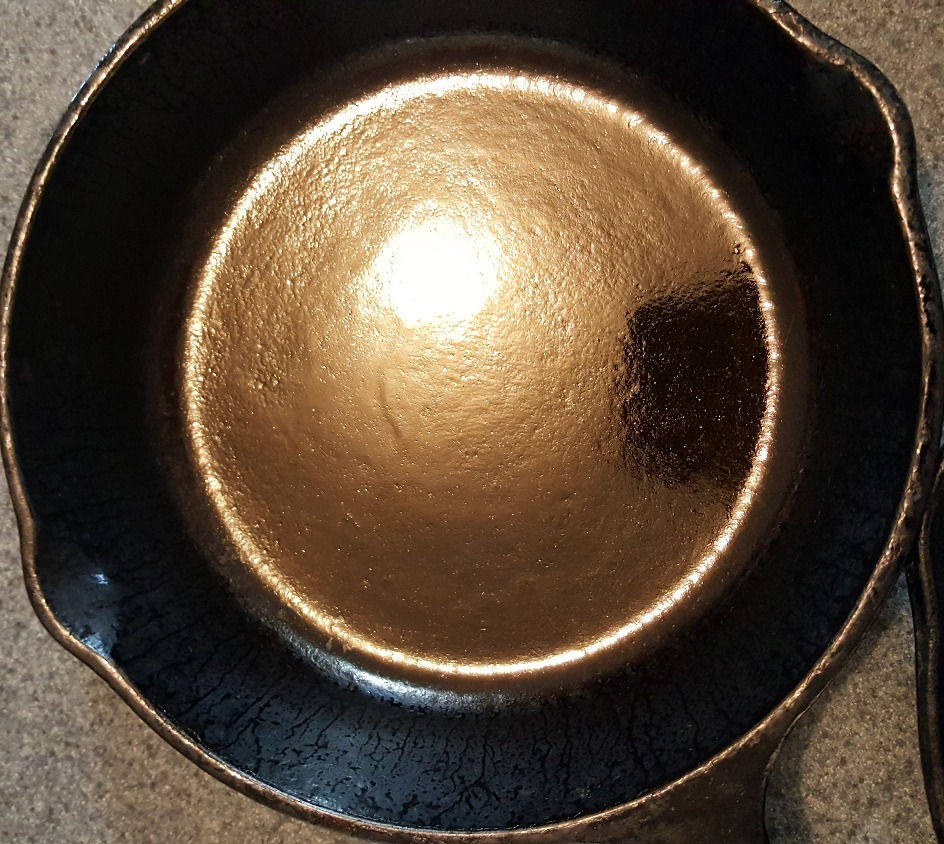Nonstick Cast Iron Pans
- James Semper

- Jan 9, 2017
- 3 min read
This DIY chemistry life hack is summarized on the blog "Chemistry Life Hacks."
Tired of food sticking to your cast iron pans? This DIY chemistry life hack will show you how to give your pans a nonstick coating with all the chemistry to back it up.
Let's start with why do things stick?
Regardless how smooth a surface appears, if you were to look at that surface with a microscope, you would see countless tiny bumps. These small bumps lock up with the small bumps of other materials. This is what causes sticking.
How do we fix this?
To reduce friction, we are going to need to fill in those bumps. There are various ways to do this but there is one we all can do in our kitchens. We can make a polymer that will act as a protective coating that should smooth things out.
Normally this polymerization occurs during each cooking session. However some people scratch their pans with steel wool or various other abrasives to remove stuck on food and this leads to removing the layer. Unfortunately, this doesn't allow for the pan to be nonstick and this encourages rusting.
To speed things up, we can make our own polymers by heating unsaturated fats. Unsaturated fats contain double bonds that can be broken and linked with other unsaturated fat molecules. This creates a plastic-like coating. All we need is energy supplied as heat to start this reaction.
Method
1) Clean your pan. If there is rust, feel free to soak your pan in coke. Coke contains phosphoric acid which is used as a rust remover. Step 3 will also remove rust.
2) Hand dry your pan.
3) Pour salt in your pan and scour with a paper towel. This removes more impurities and any rust that didn't come out earlier.
4) Rinse pan and place in oven above the boiling point of water. Leave in oven for 1-3 hours. Hand drying or even air drying will not remove the microscopic layer of water on the surface.
6) Pull pan out and coat in a thin layer of unsaturated fats. Although vegetable oil has some saturated fats, it is packed with unsaturated fats. This is the oil I used.
7) Place in oven at 450F (232C). Let the pan be at this temperature for at least 30 minutes.
8) Let the pan cool and repeat steps 6-7 until you have the desired coat. Recommend 3-4 coats.
Running the experiment
I did this myself. I used a mixture of baking soda and table salt since I had several bags of baking soda. I also poured the salt from one pan to the next to recycle it. It is worth noting that baking soda is much finer than table salt so they have different scouring properties.
I heated my oven straight to 450F (232C) even for the drying process even though boiling is at 212F (100C). All the noticeable water was gone in a few minutes and I should have left it for at least an hour or two but I didn't do this.
I used vegetable oil because of its unsaturated fat content.
I also took pictures after the first coating and I have an uncoated pan to compare it to. I know that it is better to compare each pan to itself before and after but I didn't think about that before starting the experiment. I will be completing this experiment later today and I am happy to say the pans are looking good.



No coating (top left). One coating (top right and bottom)
References:
Highly recommend subscribing to the following youtube page for everyday chemistry
Σχόλια